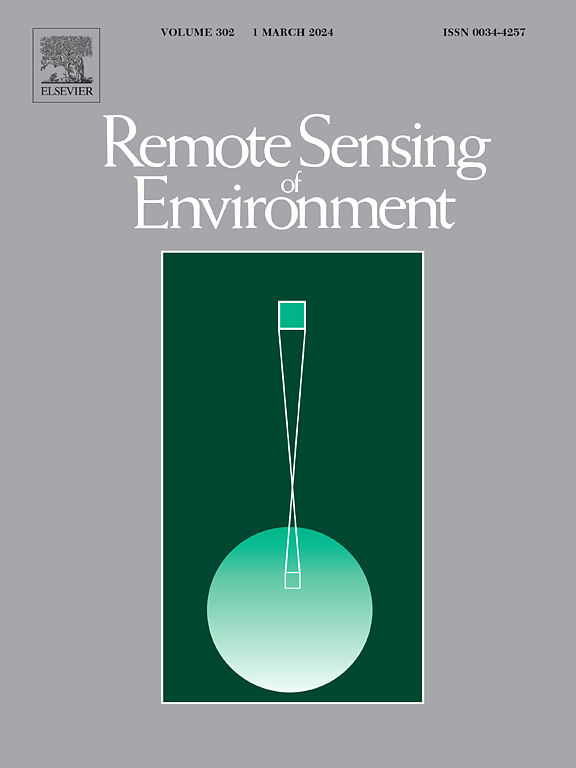绘制阿拉斯加内陆永久冻土融化阶段图
IF 11.4
1区 地球科学
Q1 ENVIRONMENTAL SCIENCES
引用次数: 0
摘要
几十年来,由于气候变暖、野火和基础设施发展,多年冻土退化已经得到了承认。然而,由于地面数据收集困难,生态系统保护的永久冻土融化的固有复杂性和异质性,以及遥感观测和基于过程的建模技术的限制,以前从未尝试过大规模表征永久冻土融化状态。在这里,我们通过开发一种新的方案,结合数十年的现场测量、重复机载激光雷达、星载WorldView-2、Sentinel-2、Landsat时间序列产品和地形高程数据集,首次尝试绘制阿拉斯加内陆一个大型富冰低地火灾影响景观(2500平方公里)的永久冻土融化状况。重复激光雷达和精细分辨率图像为解决融冰参考数据采集的瓶颈问题提供了关键,进一步为跟踪过去25年来6次大型火灾造成的火后融冰提供了机会,并将其分为四个阶段:旧融冰、侧向融冰、垂直浅融冰和垂直深融冰。开发的协议在分类这些解冻阶段方面取得了79%的总体准确性,并产生了一个合理的解冻模式,主要由火灾控制,并由其他驱动因素局部修改。识别退化模式有助于了解永久冻土-火-气候系统。该协议是当前热岩溶测绘技术的一个有价值的替代方案。本文章由计算机程序翻译,如有差异,请以英文原文为准。
Mapping permafrost thaw stages in interior Alaska
Permafrost degradation has been recognized for decades due to climate warming, wildfire, and infrastructure development. However, a large-scale characterization of permafrost thaw status has not been attempted before due to difficulties in ground data collection, inherent complications and heterogeneity of thaw in ecosystem-protected permafrost, and constraints of remote sensor observations and process-based modeling techniques. Here we made a first effort to map the status of permafrost thaw across a large ice-rich lowland fire-influenced landscape (2500 km2) in interior Alaska by developing a new protocol and combining decades of field measurements, repeat airborne lidar, spaceborne WorldView-2, Sentinel-2, Landsat time series products, and a terrain elevation dataset. The repeat lidar and fine-resolution imagery offered a key to solving the bottleneck issue of thaw reference data collection, which further provided an opportunity to track post-fire thaw caused by six large fires in the past 25 years in four stages over time: old thaw, lateral thaw, vertical shallow thaw and vertical deep thaw. The developed protocol achieved an overall accuracy of 79 % in classifying these thaw stages and generated a reasonable thaw pattern mainly controlled by fires and locally modified by other drivers. Identifying degradation patterns can help understand the permafrost-fire-climate system. The protocol is a valuable alternative to current thermokarst mapping techniques.
求助全文
通过发布文献求助,成功后即可免费获取论文全文。
去求助
来源期刊

Remote Sensing of Environment
环境科学-成像科学与照相技术
CiteScore
25.10
自引率
8.90%
发文量
455
审稿时长
53 days
期刊介绍:
Remote Sensing of Environment (RSE) serves the Earth observation community by disseminating results on the theory, science, applications, and technology that contribute to advancing the field of remote sensing. With a thoroughly interdisciplinary approach, RSE encompasses terrestrial, oceanic, and atmospheric sensing.
The journal emphasizes biophysical and quantitative approaches to remote sensing at local to global scales, covering a diverse range of applications and techniques.
RSE serves as a vital platform for the exchange of knowledge and advancements in the dynamic field of remote sensing.
 求助内容:
求助内容: 应助结果提醒方式:
应助结果提醒方式:


